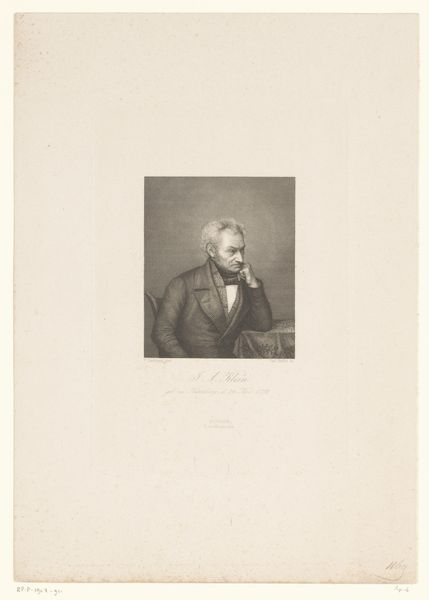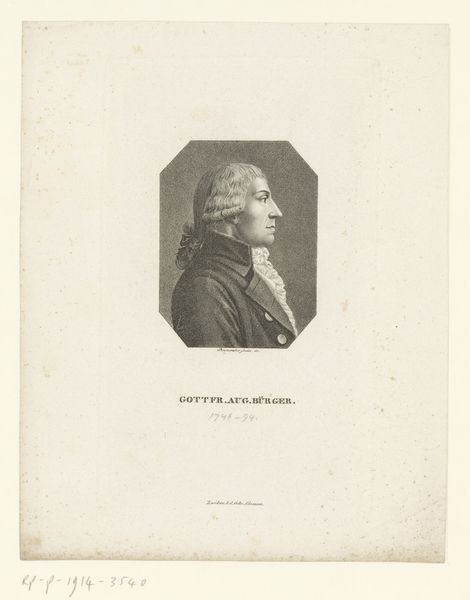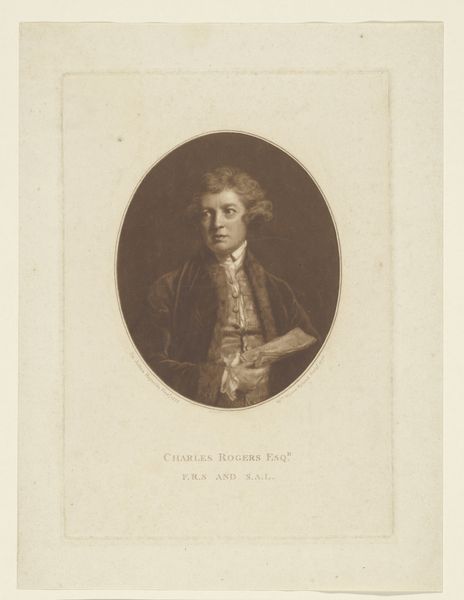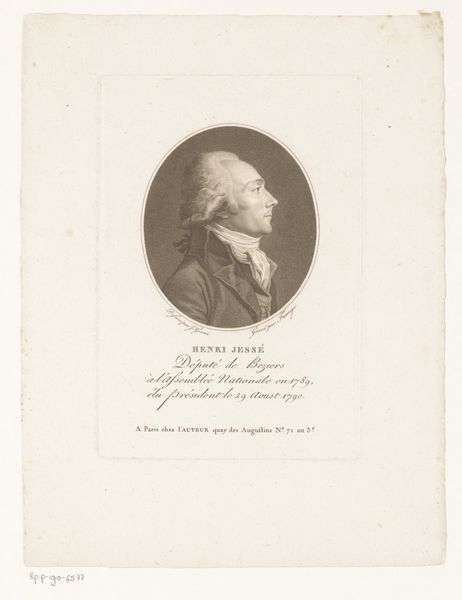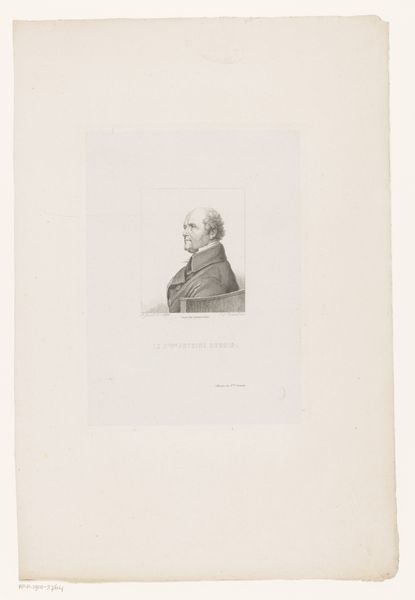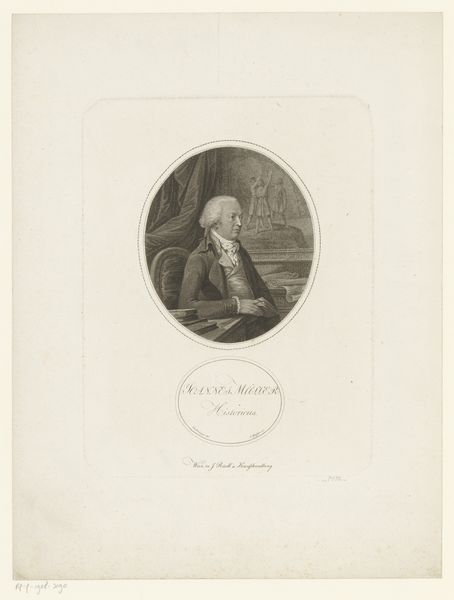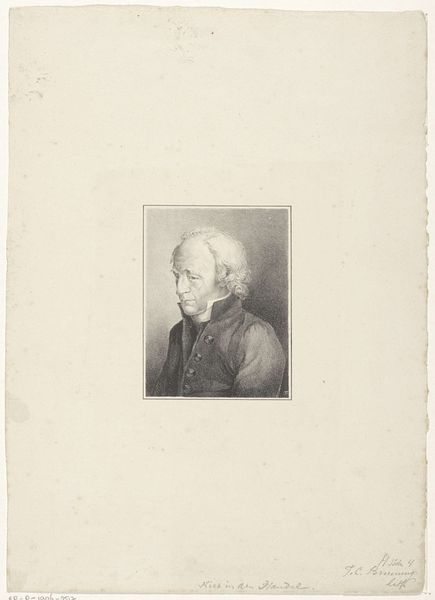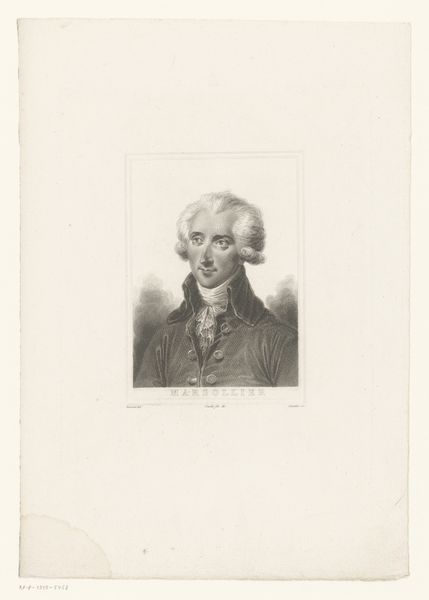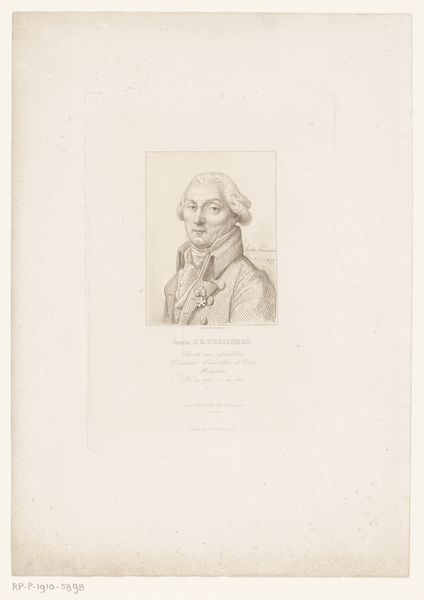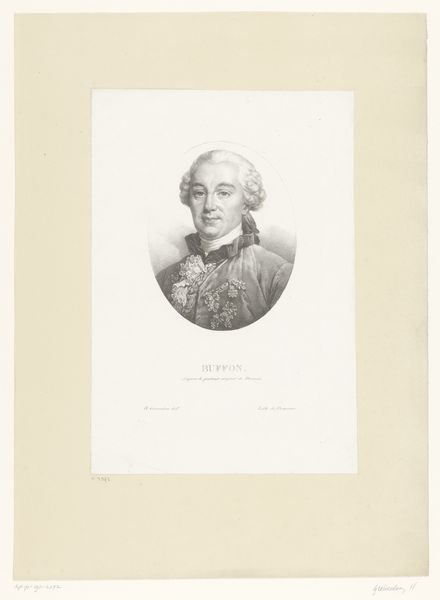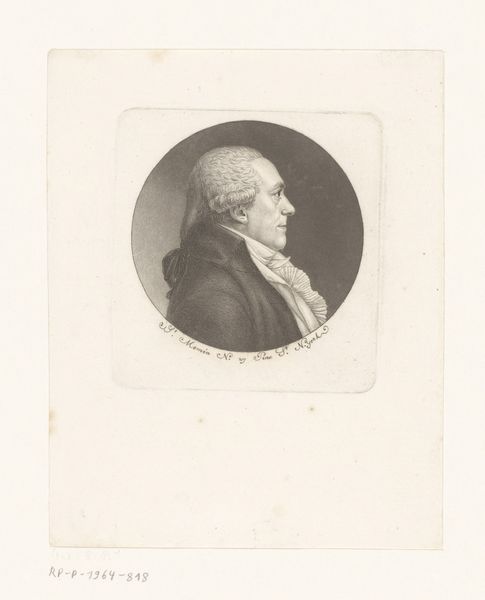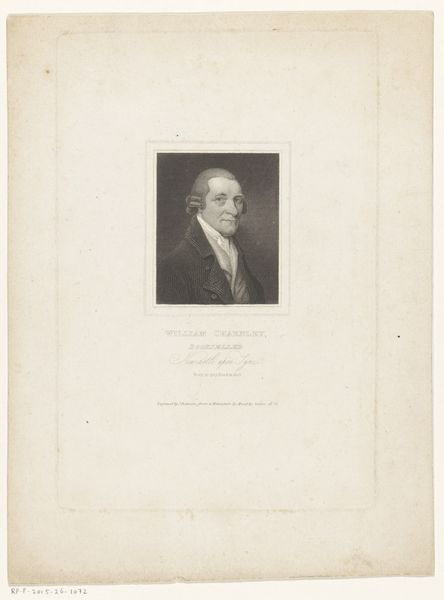
print, engraving
#
portrait
#
neoclacissism
# print
#
engraving
#
realism
Dimensions: height 261 mm, width 219 mm
Copyright: Rijks Museum: Open Domain
Editor: So, this is a print, an engraving actually, called "Portret van Friedrich Gottlieb Klopstock," made sometime between 1822 and 1863 by Lazarus Gottlieb Sichling. There's something very still and composed about it. I’m struck by how much the lines define the form, the shadowing adding depth and gravity. What do you see in it? Curator: A formal approach reveals much. Note how the artist meticulously renders the subject's features. Sichling’s employment of line is fascinating; the varying thickness creates depth, directing the viewer's eye across the composition. What do you notice about the textures conveyed purely through engraving? Editor: I see how the ruffles of his jabot, the soft fabric of his coat, and even the skin itself are differentiated through those lines. It’s impressive that he can suggest so much tactile information without color or a range of values. Curator: Precisely. The subtle gradations achieved only with line is masterful. Consider the overall balance, the distribution of light and dark. Where does your eye rest first, and how does it move from there? Editor: I immediately looked at his face, especially the eye looking toward the right. And then my eye went down to his white jabot. There’s a clear contrast there that creates a focal point. Curator: Notice the symmetry, which is so precise. Yet it doesn't feel static because of that gaze and the subtle differences in shadow. Sichling expertly manipulates line and value to capture the essence of form and character. Have your perceptions of the piece evolved? Editor: Definitely! I see the artistic decisions so much more clearly now. Thinking about line, shadow, and composition really unlocks what the artist was trying to do. Curator: Indeed. And perhaps also unlocks what we are trying to do when we truly look at a work of art.
Comments
No comments
Be the first to comment and join the conversation on the ultimate creative platform.
